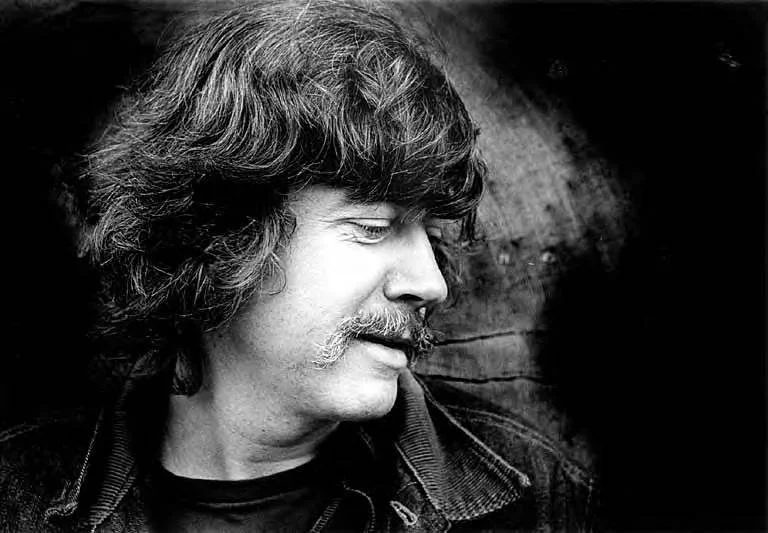In Memoriam: Tom Robbins, Washington Author
This morning, I awoke to the news that one of my favorite authors walked beyond the veil on February 9. Tom Robbins, a prolific novelist, was born in North Carolina in 1932, then relocated to Washington State in the 1960s. He wrote with a bohemian playfulness and humor that often belied his philosophical style and was once most accurately dubbed “The Northwest’s Master of Zen-Punk” by Seattle Weekly writer Roger Downey in 2006.
My first experience reading Robbins happened in 2000. I had recently moved from Arkansas to Seattle, as a 19-year-old high on curiosity, and the belief that if I wanted to do something (like perhaps move across the country with my best friend and only $250 in my pocket), then I could and I should. At the time, I lived in the U District, which, in an antithesis to the shiny storefronts of now, was home to multiple record stores, vintage and resale clothing shops, art theaters, cafes, and a considerable number of secondhand bookstores, including Twice Sold Tales on 45th and University Ave.
Cover of Jitterbug Perfume by Tom Robbins
I worked on the Ave, and, as a voracious reader (who also loved talking literature with the guy I had a crush on behind the counter), perused this shop several times a week. During one of these browsing sessions, I came across Jitterbug Perfume. While the old adage says not to judge books by their covers, I definitely did (and do) and am rarely steered wrong. Large white text set against a dark blue background which formed an arched doorway, through which a woman’s hand lifted the stopper top of an antique perfume bottle, engraved with an image of the god Pan. Smoky fumes drifted upward, while in the background, white-clad couples danced the jitterbug (presumably) on red and yellow squares.
The title and cover drew me in, and I immediately purchased the book, took it to work, and devoured it on my breaks and later that night at home, not falling asleep until I had finished. Then I read it again.
Each read revealed new details in the interwoven stories of Alobar, the god Pan, and Kudra that began in 8th Century to the present-day (well, “present” in the 1980s) tale of Priscilla and Wiggs Dannyboy, V’lu, Bingo Pajama, The LeFever Brothers, and Madame Devalier, and the pursuit of immortality and the perfect perfume, taking place in Bohemia, Seattle, New Orleans, and Paris.
Robbins’ writing so consummately described aspects of my new chosen home that I could feel through the pages the love that he—a fellow Southern transplant—had for this magical place: “Seattle rain, the widespread rain of the Great Northwest, smells of green ice and sumi ink, of geology and silence and minnow breath.” Even the rain was different here than back home, and Robbins’ interpretations painted a precise and vivid image.
Embedded in the saga of magical realism, history (both real and mythical), love, and the eternal weirdness of it all was a tenderness that showcased Robbins’ deep appreciation of humans and the world. There are countless quotes that I could pull from this book that grabbed my attention, but one, in particular, stood out to me, and told me I was on the right track in my young life:
“Perhaps the most terrible (or wonderful) thing that can happen to an imaginative youth, aside from the curse (or blessing) of imagination itself, is to be exposed without preparation to the life outside his or her own sphere - the sudden revelation that there is a there out there.”
I read this and knew that I was not alone in wanting to see as many “theres out there” as possible in my life. I felt the certainty that Robbins was a kindred spirit.
From there, I sought out all of Robbins’ works; my favorites besides Jitterbug Perfume (1984) are Another Roadside Attraction (1971), Skinny Legs and All (1990), Still Life With Woodpecker (1980), Even Cowgirls Get the Blues (1976), and Half-Asleep in Frog Pajamas (1994). These books are a kaleidoscope of well-written, flawed, human women characters, and as a 19-year-old who read a lot of “books you should read” alongside Camus, the Beat writers, and Kathy Acker, it felt like fleshed-out women in fiction, especially as written by men, were few and far between.
These days, there are multiple memes about the limitations of “men writing women”, but Robbins’ women were believable because he recognized us as fellow humans. He saw us as the multifaceted human beings we are, running the gamut from faithful, to fanatical, to fallible. His characters (man, woman, human, and object) get under one’s skin, and the stories that he wove changed the way I saw the world for the better at a time when I was just starting my journey. They taught me not to give up on my curiosity or imagination, to let go of my sense of the absurd, and try not to stuff people into little boxes.
Robbins once said, “Death is simple. Life is messy. Give me life, the more complicated the better.”


